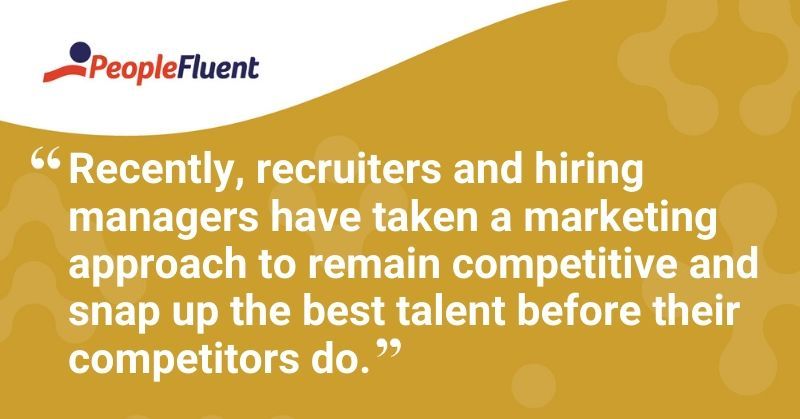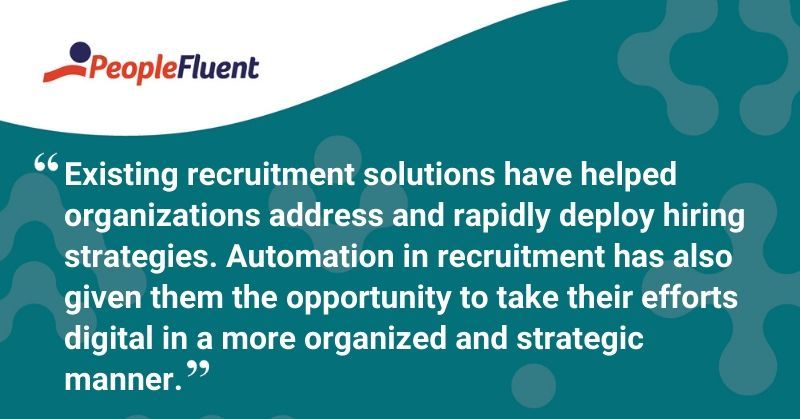Published: Jun 8, 2020Time to read: 7mins Category: Insights
How COVID-19 Has and Will Change Recruiting Strategies
Table of Contents
For generations, recruiting new staff was a rote process: scan through resumes, bring in top candidates, have multiple in-person interviews, shake hands, and finally, extend an offer. Now, that might seem a distant memory as we only begin to see the light at the end of the tunnel after the dust caused by the COVID-19 pandemic starts to settle. The questions we have are: “What now? What next, and where do we go from here?” The will to move forward is there, but how?
Before COVID-19 turned the war for talent on its head, the previous landscape was an employee marketplace with companies investing heavily in securing the best possible hires. Now, with millions unemployed and a workforce ready to find and participate in the “new norm”, organizations must learn to pivot and give way to change as the future of recruiting arrives.
Recruiting strategies have and will continue to change in order to keep up with the shifting ways we work and live. In order to forge a clear, productive path forward, companies must be ready to have a strategic recruiting strategy in place and be ready for the future of recruiting.
In the rest of this article, we’ll examine the many ways recruiting has evolved as well as how to inspire and sustain growth while ‘business as usual’ takes on a new form.
How Recruiting Has Evolved
A generation ago, companies posted jobs and got people in the door, their new hires fulfilling tasks within the first days of employment. Today, the dynamic of employee-employer relationships has shifted. Employees are increasingly eager to reach the next stage of their careers sooner. They want to know what is expected of them, what skills they need, and how they can move forward. Employers are in search of the best possible talent rather than someone to manage a task list. Employers are seeking employees who provide added value and a return on investment.
During the 1990s and early to mid-2000s, recruiters would sift through endless resumes and/or newspaper classifieds. However, in order to find these best possible hires, employers have had to evolve their recruiting strategies. Even 10 years ago, when technological advancements like video conferencing were not as widely used, the hiring process looked much different than it does today. Recently, recruiters and hiring managers have taken a marketing approach to remain competitive and snap up the best talent before their competitors do. Becoming a high-volume recruiter with a successful track record is almost as competitive as seeking top performers.
Many of the recruiting tactics that are widely used today include:
- video interviewing
- automation for communications, tracking, and interview scheduling
- social media ad campaigns.
Before video interviewing was available to talent acquisition managers, interviewing and hiring were typically restricted to candidates within the hiring manager's radius. As these recruitment methods grow in popularity, combined with the fact that many companies have introduced ‘work from home’ policies, finding and hiring top talent across the globe is becoming much easier—allowing their candidate pool to grow.

Also read: '3 Tips for Using Video Interviewing Tools'
Hiring Patterns Will Vary
While hiring patterns vary from company to company, and industry to industry, some will take longer than others to return to pre-pandemic levels. A recent survey showed 42% of respondents reported that their company froze or reduced hiring as of March 23rd, in an effort to reduce costs. On the other side of the coin, many companies have remained stable enough to continue their pre-pandemic hiring practices. For example, the e-commerce conglomerate, Amazon, saw a 25% increase in their US workforce and has taken strides to hire furloughed or unemployed workers from other business sectors.
Certain areas of the technology sector haven’t experienced many variations in their hiring patterns. In fact, several companies are continuing to see high growth, especially for cybersecurity specialists, systems engineers, and .NET developers. By holding fast to planned hiring activities for the first and second quarters and identifying skill sets that are more in-demand, many tech companies are continuing with ‘business as usual’. Additional trends that hiring managers should be aware of include:
- the need for more remote opportunities for contingent and freelance workers
- higher utilization of teleconferencing platforms like Google Hangouts, Skype, and Zoom
- pre-boarding and onboarding software to ensure new hires are up to speed while working remotely
- a greater focus on succession planning and internal mobility for existing employees.
Handpicked for you: ‘4 Practical Ways to Recruit Diverse Talent’
Digital Hiring Efforts Continue
Companies that have staying power and continue to plan for the future can attribute their growth during the pandemic to advancements in technology, like feature-rich recruiting software or video conferencing tools. What’s more, the proliferated use of technology to manage the recruiting process will likely stick around after COVID-19 lockdowns have been lifted. As the pandemic continues to accelerate digital recruiting strategies, organizations are moving quickly to adopt virtual hiring platforms to conduct video screening and interviewing.
Furthermore, onboarding is now being done via video conference and companies have started to move their learning and development (L&D) programs online to deliver more eLearning materials and training than before. Although business continuity efforts took a front seat during the onset of stay-at-home orders, there are still improvements underway to ensure digital hiring is a long-term possibility.
Luckily, the ability to tackle these challenges during remote work has not been lost on business leaders. Existing recruitment solutions have helped organizations address and rapidly deploy hiring strategies. Automation in recruitment has also given them the opportunity to take their efforts digital in a more organized and strategic manner. Improving and expanding on efforts, like candidate experience, workforce data, and recruiter productivity, are still overarching goals for HR teams and hiring managers.

More from the blog: 'How to Implement an ATS: 13 Things You Need to Accelerate ROI'
Returning to Business as Usual
While a majority of workers won’t return to ‘normal’, we’ve already seen business operations begin to resume. Although some people are going back to work, US jobless claims reached 1.8 million at the end of May, with indications that it may continue to peak. This begs the question many leaders across the world have had: How and when will businesses begin to repopulate their workforces to pre-pandemic levels? Even with updated forecasting from the experts, the short answer is that it will take time and effort across every organization.
In the meantime, companies have to use technology at greater levels to ensure business continuity. Companies will need to focus on the employee journey, outside of just recruiting, which means it’s critical to integrate their hiring efforts with L&D. Rather than merely filling an empty role, hiring managers will need to consistently develop multiple avenues to secure top talent. This effort will require a multi-pronged approach from business leaders and HR professionals.
Recruiting will continue to be more about perks and a demonstrated investment in the organization’s people. In addition to offering more robust benefits and rewards packages, upskilling your existing staff and allowing room for growth is imperative. As a collaborative effort, hiring managers should liaise closely with HR and business executives to ensure they have fast access to the resources needed.
You might also like: 'How Talent Experience Benefits Employee and Employer'
Make Recruiting More Efficient and Produce Better Outcomes
Built for how we work and live today, with integrated texting, video, social and mobile app collaboration, PeopleFluent Recruiting helps organizations create a streamlined experience for candidates, recruitment teams, employees, and hiring managers.